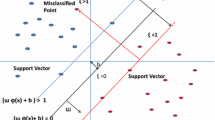Abstract
Classifier performance assessment (CPA) is a challenging task for pattern recognition. In recent years, various CPA metrics have been developed to help assess the performance of classifiers. Although the classification accuracy (CA), which is the most popular metric in pattern recognition area, works well if the classes have equal number of samples, it fails to evaluate the recognition performance of each class when the classes have different number of samples. To overcome this problem, researchers have developed various metrics including sensitivity, specificity, area under curve, Jaccard index, Kappa, and F-measure except CA. Giving many evaluation metrics for assessing the performance of classifiers make large tables possible. Additionally, when comparing classifiers with each other, while a classifier might be more successful on a metric, it may have poor performance for the other metrics. Hence, such kinds of situations make it difficult to track results and compare classifiers. This study proposes a stable and profound knowledge criterion that allows the performance of a classifier to be evaluated with only a single metric called as polygon area metric (PAM). Thus, classifier performance can be easily evaluated without the need for several metrics. The stability and validity of the proposed metric were tested with the k-nearest neighbor, support vector machines, and linear discriminant analysis classifiers on a total of 7 different datasets, five of which were artificial. The results indicate that the proposed PAM method is simple but effective for evaluating classifier performance.





Similar content being viewed by others
References
Aydemir, O., & Kayikcioglu, T. (2011). Wavelet transform based classification of invasive brain computer interface data. Radioengineering, 20(1), 31–38.
Aydemir, O., & Kayikcioglu, T. (2013). Comparing common machine learning classifiers in low-dimensional feature vectors for brain computer interface applications. International Journal of Innovative Computing Information and Control, 9(3), 1145–1157.
Chu, C., Ni, Y., Tan, G., Saunders, C. J., & Ashburner, J. (2011). Kernel regression for fMRI pattern prediction. NeuroImage, 56(2), 662–673.
Dixon, S. J., & Brereton, R. G. (2009). Comparison of performance of five common classifiers represented as boundary methods: Euclidean distance to centroids, linear discriminant analysis, quadratic discriminant analysis, learning vector quantization and support vector machines, as dependent on data structure. Chemometrics and Intelligent Laboratory Systems, 95(1), 1–17.
Fawcett, T. (2006). An introduction to ROC analysis. Pattern Recognition Letters, 27(8), 861–874.
Framinan, J. M., Perez-Gonzalez, P., & Fernandez-Viagas, V. (2019). Deterministic assembly scheduling problems: a review and classification of concurrent-type scheduling models and solution procedures. European Journal of Operational Research, 273(2), 401–417.
Kim, S. J., Cho, K. J., & Oh, S. (2017). Development of machine learning models for diagnosis of glaucoma. PLoS One, 12(5), e0177726.
Lal, T. N., Hinterberger, T., Widman, G., Schröder, M., Hill, N. J., Rosenstiel, W., Elger, C. E., Schölkopf, B., & Birbaumer, N. (2005). Methods towards invasive human brain computer interfaces. Advances in Neural Information Processing Systems (NIPS) 17, MA, Cambridge:MIT Press, 737–744.
Ohsaki, M., Wang, P., Matsuda, K., Katagiri, S., Watanabe, H., & Ralescu, A. (2017). Confusion-matrix-based kernel logistic regression for imbalanced data classification. IEEE Transactions on Knowledge and Data Engineering, 29(9), 1806–1819.
Shiferaw, H., Bewket, W., & Eckert, S. (2019). Performances of machine learning algorithms for mapping fractional cover of an invasive plant species in a dryland ecosystem. Ecology and Evolution, 9(5), 2562–2574.
William H. Wolberg W. H., Street W. N. and Mangasarian O. L., (1995) UCI machine learning repository. https://archive.ics.uci.edu/ml/datasets/Breast+Cancer+Wisconsin+(Diagnostic).
Author information
Authors and Affiliations
Corresponding author
Additional information
Publisher’s Note
Springer Nature remains neutral with regard to jurisdictional claims in published maps and institutional affiliations.
Rights and permissions
About this article
Cite this article
Aydemir, O. A New Performance Evaluation Metric for Classifiers: Polygon Area Metric. J Classif 38, 16–26 (2021). https://doi.org/10.1007/s00357-020-09362-5
Published:
Issue Date:
DOI: https://doi.org/10.1007/s00357-020-09362-5




